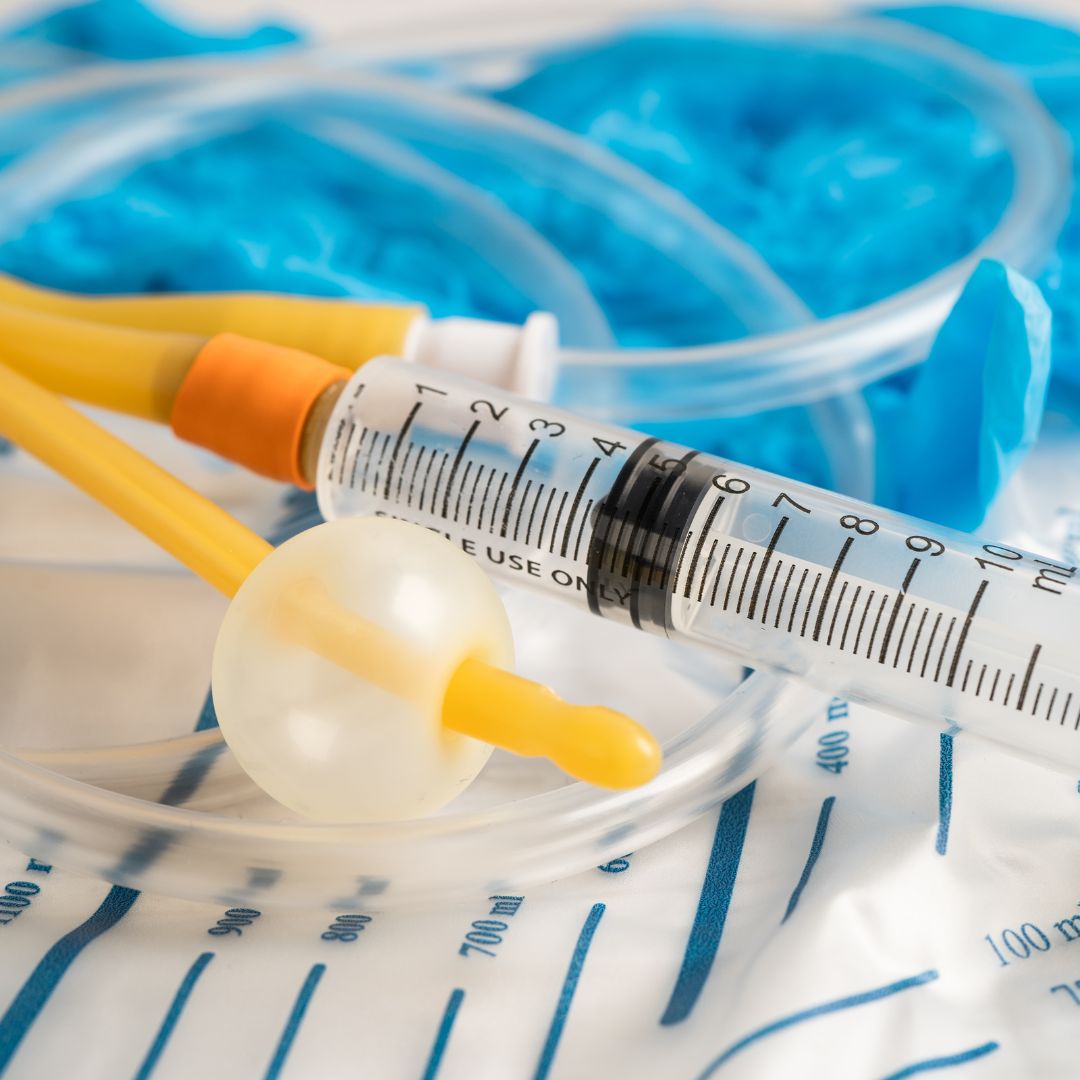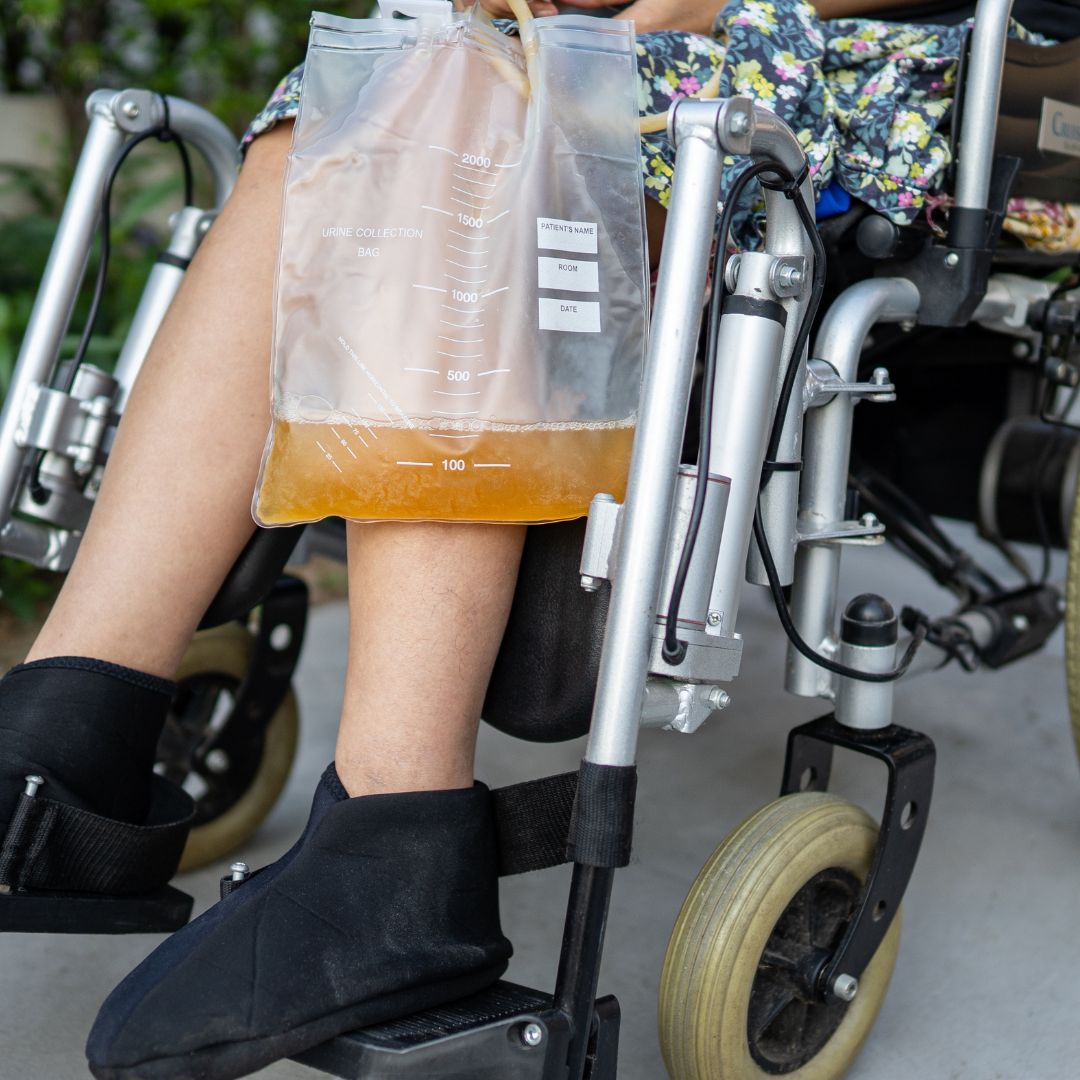Urinary Catheter Care
- Home
- Community Nursing
- Urinary Catheter Care
Nurses at Your Door Step
Urinary Catheter Care
A urinary catheter is a flexible tube used to drain urine from the bladder. It is commonly used for patients who cannot urinate naturally due to various medical conditions, surgeries, or injuries. The catheter is inserted into the bladder through the urethra or a small incision in the abdomen.

Types of Urinary Catheters
Indwelling Catheters (Foley Catheters)
These catheters are designed for long-term use and have a small balloon at the end that is inflated to keep the catheter in place in the bladder. Typically used for patients who require continuous urine drainage over an extended period.
Intermittent Catheters
Also known as “in-and-out” catheters, they are inserted into the bladder to drain urine and then removed immediately after the bladder is empty. Often used by patients who need to catheterize themselves periodically throughout the day.
Suprapubic Catheters
Inserted into the bladder through a small incision in the abdomen, just above the pubic bone. Used when the urethra is damaged or when long-term catheterization is required.
External Catheters (Condom Catheters)
These catheters are placed over the penis like a condom and connected to a drainage bag. Commonly used for male patients with incontinence who do not need an indwelling catheter.

The Role of Registered Nurses in Catheter Care
Registered Nurses (RNs) play a vital role in the management and care of patients with urinary catheters. Their responsibilities include; Assessment, Insertion and Removal, Education, Monitoring, Maintenance and Documentation.
High Intensity Supports- Urinary catheters
A registered nurse should delegate tasks to support workers only if they fall within the support workers’ scope of practice. This includes duties such as reading care plans, keeping SPC sites clean, and reporting any changes in catheter condition to the nurse. Support workers often assist individuals needing catheter bag attachment, bag changes, emptying of urine bags etc. However, the responsibility for catheter changes typically rests with someone who has nursing qualifications. Support workers perform limited care tasks under the supervision of healthcare professionals such as a Registered Nurse/ / Clinical Nurse have relevant training.
As per NDIS commission and safeguards, “Replacing and disposing of bags and monitoring health of people using indwelling and suprapubic catheters can be part of a general support worker role. In these cases, insertion of the catheter is done by a health practitioner such as a Registered Nurse/ Clinical Nurse. In some cases, a support worker may insert an intermittent catheter. This requires high-intensity support and oversight by a health practitioner. Insertion of indwelling and suprapubic catheters should be done by a health practitioner.”

Commonly used line-item number for these supports
Disability Related Health Supports- Nursing Supports
01_606_0114_1_1
- Delivery of Health Supports by a Registered Nurse
- Weekday Daytime Hour $115.21
01_607_0114_1_1
- Delivery of Health Supports by a Registered Nurse
- Weekday Evening Hour $127.10
01_611_0114_1_1
- Delivery of Health Supports by a Registered Nurse
- Weekday Night Hour $129.46
01_608_0114_1_1
- Delivery of Health Supports by a Registered Nurse
- Saturday Hour $164.42
01_609_0114_1_1
- Delivery of Health Supports by a Registered Nurse
- Sunday Hour $189.02
01_610_0114_1_1
- Delivery of Health Supports by a Registered Nurse
- Public Holiday Hour $213.62
01_612_0114_1_1
- Delivery of Health Supports by a Clinical Nurse
- Weekday Daytime Hour $133.27
01_613_0114_1_1
- Delivery of Health Supports by a Clinical Nurse
- Weekday Evening Hour $147.00
01_799_0114_1_1
- Provider Travel
- Non-Labour Costs using support item
15_406_0114_1_3
- Delivery of Health Supports by a Registered Nurse
- Weekday Daytime Hour $115.21
15_407_0114_1_3
- Delivery of Health Supports by a Registered Nurse
- Weekday Evening Hour $127.10
15_411_0114_1_3
- Delivery of Health Supports by a Registered Nurse
- Weekday Night Hour $129.46
15_408_0114_1_3
- Delivery of Health Supports by a Registered Nurse
- Saturday Hour $164.42
5_409_0114_1_3
- Delivery of Health Supports by a Registered Nurse
- Sunday Hour $189.02
15_410_0114_1_3
- Delivery of Health Supports by a Registered Nurse
- Public Holiday Hour $213.62
15_412_0114_1_3
- Delivery of Health Supports by a Clinical Nurse
- Weekday Daytime Hour $133.27
15_413_0114_1_3
- Delivery of Health Supports by a Clinical Nurse
- Weekday Evening Hour $147.00
Message Us
Send Us Message
Information
Contact
- NDIS Number: 4050124966

